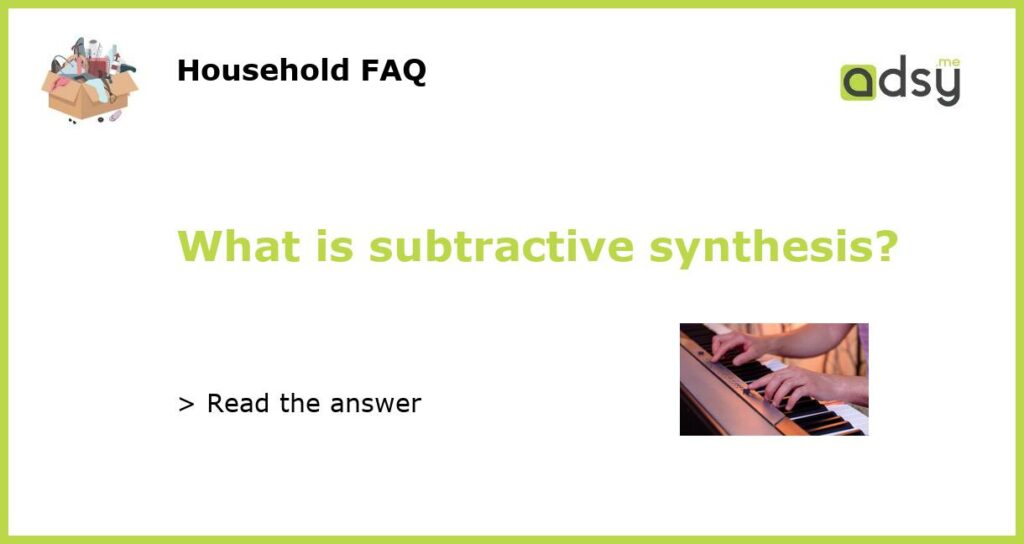Understanding Subtractive Synthesis: A Beginner’s Guide
If you’ve ever listened to electronic music, you’ve probably come across the term “subtractive synthesis”. But what exactly does it mean? Well, simply put, it refers to a type of sound synthesis where an oscillator generates a rich waveform, which is then filtered to remove unwanted frequencies, resulting in a desired sound. In this article, we’ll take a closer look at subtractive synthesis and how it works.
The Basics of Subtractive Synthesis
Subtractive synthesis is a type of synthesis that involves starting with a rich waveform and then filtering out unwanted frequencies to create a desired sound. To create the waveform, a synthesizer uses one or more oscillators, which generate a complex waveform that contains a range of harmonics. The waveform is then passed through a filter, which removes unwanted harmonics to achieve the desired sound.
The Role of Filters in Subtractive Synthesis
Filters are the key to subtractive synthesis. They help remove unwanted frequencies from the waveform, allowing you to shape the sound to your liking. Filters can be low-pass, high-pass, or band-pass, depending on the frequencies they allow through. By adjusting the cutoff frequency of the filter, you can determine which frequencies are removed from the waveform, resulting in different timbres and tones.
The Advantages of Subtractive Synthesis
Subtractive synthesis is a versatile and expressive synthesis technique that offers a range of advantages. One of the main advantages is its ability to produce warm and rich sounds, thanks to the use of complex waveforms. It is also a great choice for creating pads, basses, and leads, as well as for shaping drum and percussion sounds. Moreover, subtractive synthesis is simple and easy to understand, making it a great choice for beginners who are just starting with synthesis.
Conclusion: Experimenting with Subtractive Synthesis
If you’re interested in exploring subtractive synthesis, there are plenty of software synthesizers that you can use to experiment with different sounds and techniques. Some popular options include Massive X by Native Instruments, Serum by Xfer Records, and Pigments by Arturia. Whether you’re a beginner or an experienced synthesist, subtractive synthesis is a powerful tool that you can use to create unique and captivating sounds.






